Matters Needing Attention in the Treatment of Transformer Short Circuit Fault: What You Need to Know?
Are you worried about the reliability of your power system? Transformer short circuit faults can be a major headache for any electrical engineer or facility manager.
Treating transformer short circuit faults requires careful attention to insulation performance, moisture control, core grounding, winding materials, drying techniques, oil quality, and safety procedures. Proper handling of these aspects is crucial for maintaining transformer reliability and longevity.
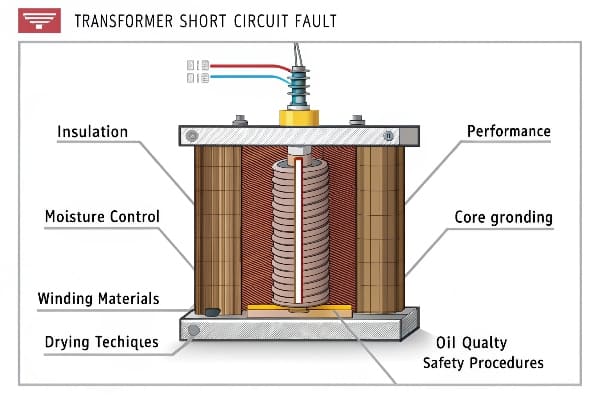
In my years of experience dealing with transformer issues, I’ve learned that addressing short circuit faults is a complex process. Let’s dive into the key areas that demand our attention when tackling these problems.
Insulation Component Performance Testing and Confirmation: How Critical Is It?
Have you ever wondered why some transformers fail unexpectedly while others keep running smoothly for years? The secret often lies in the quality of insulation.
Insulation component performance testing is crucial in transformer maintenance. It helps identify potential weak points before they lead to failures. Regular testing and confirmation of insulation integrity can significantly reduce the risk of short circuit faults.

In my experience, neglecting insulation testing is like driving a car without ever checking the brakes. Here’s why it’s so important:
Types of Insulation Tests
-
Insulation Resistance Test:
- Measures the resistance between windings and ground
- Helps detect moisture ingress or contamination
-
Power Factor Test:
- Assesses the overall condition of the insulation system
- Can indicate aging or deterioration of insulation
-
Partial Discharge Test:
- Detects small electrical discharges within the insulation
- Early warning sign of insulation breakdown
Frequency of Testing
| Transformer Type | Recommended Testing Frequency |
|---|---|
| Critical Units | Annually |
| Standard Units | Every 2-3 years |
| New Installations | Before commissioning |
Interpreting Test Results
Understanding test results is crucial. Here’s what I look for:
-
Trend Analysis:
- Compare current results with historical data
- Look for gradual deterioration over time
-
Sudden Changes:
- Any abrupt change in values warrants immediate attention
- Could indicate a developing fault
-
Industry Standards:
- Compare results against IEEE or IEC standards
- Helps in determining if the insulation is within acceptable limits
In my career, I’ve seen cases where regular insulation testing caught potential issues before they turned into major failures. For instance, a slight increase in partial discharge activity led us to discover a small manufacturing defect in a new transformer. We addressed it before it could cause a short circuit, potentially saving millions in downtime and repairs.
Remember, insulation testing is not just about passing or failing a test. It’s about understanding the health of your transformer and making informed decisions about maintenance and replacement schedules.
Impact of Moisture and Oil Immersion on Insulation Performance: What’s the Big Deal?
Ever wondered why transformer experts are always fussing about moisture levels? It’s not just about keeping things dry – it’s about preventing catastrophic failures.
Moisture and oil immersion significantly affect transformer insulation performance. Excessive moisture can degrade insulation, reduce dielectric strength, and lead to short circuits. Proper oil immersion is crucial for insulation cooling and maintaining dielectric properties.

Throughout my career, I’ve seen the devastating effects of moisture on transformer insulation. Let me break it down for you:
Effects of Moisture on Insulation
-
Reduced Dielectric Strength:
- Moisture lowers the insulation’s ability to withstand electrical stress
- Can lead to partial discharges and eventual breakdown
-
Accelerated Aging:
- Moisture catalyzes chemical reactions that degrade insulation materials
- Can significantly shorten the transformer’s lifespan
-
Increased Electrical Losses:
- Wet insulation has higher conductivity
- Results in increased power losses and reduced efficiency
Oil Immersion Benefits
| Aspect | Benefit |
|---|---|
| Cooling | Efficient heat dissipation from windings |
| Insulation | Enhances overall dielectric strength |
| Longevity | Protects solid insulation from oxidation |
Moisture Control Strategies
Based on my experience, here are some effective strategies for moisture control:
-
Regular Oil Testing:
- Perform Karl Fischer titration to measure water content
- Aim for moisture levels below 10 ppm for optimal performance
-
Online Moisture Monitoring:
- Install continuous moisture sensors
- Allows for real-time tracking and early intervention
-
Proper Sealing:
- Ensure all gaskets and seals are in good condition
- Prevents moisture ingress from the environment
-
Breathing Systems:
- Use silica gel breathers to absorb moisture from incoming air
- Regularly inspect and replace silica gel
-
Oil Regeneration:
- Periodically treat oil to remove accumulated moisture
- Can significantly extend the life of both oil and solid insulation
I once dealt with a transformer that had been flooded during a storm. The moisture content in the oil skyrocketed, and we had to act fast. We implemented an emergency drying process and oil regeneration. It was a close call, but we managed to save the transformer from a potential short circuit failure.
Remember, moisture control is an ongoing process. It’s not enough to dry out a transformer once and forget about it. Continuous monitoring and maintenance are key to ensuring long-term reliability and preventing those dreaded short circuit faults.
Prevention and Inspection of Core Grounding Issues: Why Is It Crucial?
Have you ever considered how a tiny grounding issue could lead to a major transformer failure? Core grounding problems are often overlooked but can have serious consequences.
Core grounding issues can lead to circulating currents, localized heating, and insulation breakdown. Regular inspection and proper maintenance of core grounding systems are essential to prevent short circuit faults and ensure transformer longevity.
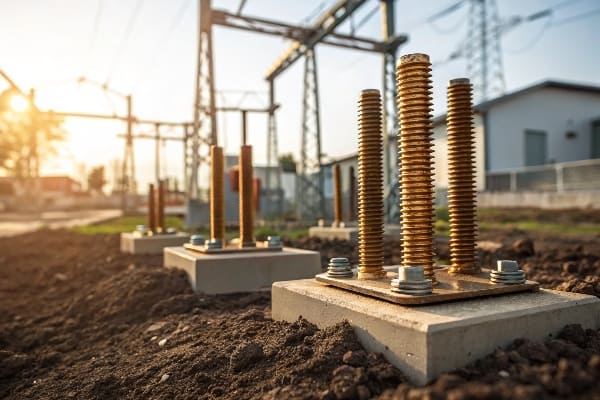
In my years of working with transformers, I’ve learned that core grounding is not just a minor detail – it’s a critical aspect of transformer health. Here’s what you need to know:
Importance of Proper Core Grounding
-
Prevents Circulating Currents:
- Proper grounding eliminates stray magnetic flux
- Reduces eddy currents and associated losses
-
Enhances Safety:
- Ensures the core remains at ground potential
- Protects personnel during maintenance
-
Improves Transformer Efficiency:
- Reduces core losses
- Contributes to overall energy efficiency
Common Core Grounding Issues
| Issue | Potential Consequences |
|---|---|
| Loose Connections | Increased core losses, localized heating |
| Multiple Ground Points | Circulating currents, increased losses |
| Insulation Breakdown | Core-to-ground faults, short circuits |
Inspection and Maintenance Practices
Based on my experience, here are key practices for maintaining proper core grounding:
-
Regular Visual Inspections:
- Check for signs of overheating or discoloration
- Inspect grounding straps for corrosion or damage
-
Electrical Testing:
- Perform core insulation resistance tests
- Measure core ground current during operation
-
Thermographic Surveys:
- Use infrared cameras to detect hot spots
- Can reveal hidden grounding issues
-
Proper Grounding Techniques:
- Ensure single-point grounding to avoid circulating currents
- Use appropriate materials for grounding connections
-
Documentation and Trending:
- Keep detailed records of all inspections and tests
- Track changes over time to identify developing issues
I once encountered a transformer with unexplained efficiency losses. After thorough investigation, we discovered that the core grounding strap had corroded, creating a high-resistance connection. This seemingly small issue was causing significant core losses and putting the transformer at risk of a more serious failure.
Remember, core grounding issues might not cause immediate, dramatic failures, but they can lead to long-term degradation and increased risk of short circuits. Regular inspection and maintenance of core grounding systems are investments in your transformer’s health and longevity.
Optimizing Winding Materials and Transformer Structure: What’s the Secret?
Ever wondered why some transformers seem to handle stress better than others? The answer often lies in the choice of winding materials and structural design.
Optimizing winding materials and transformer structure is crucial for enhancing short circuit strength. Proper selection of conductor materials, insulation systems, and mechanical support structures can significantly improve a transformer’s ability to withstand fault conditions.
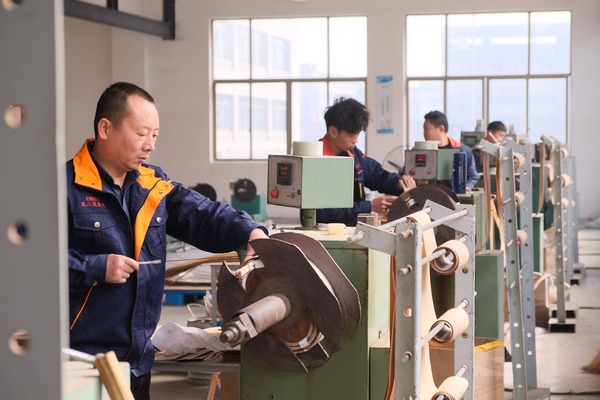
Throughout my career, I’ve seen how the right choices in materials and design can make a world of difference. Let’s dive into the key aspects:
Winding Material Selection
-
Conductor Materials:
- Copper vs. Aluminum: Trade-offs between conductivity and weight
- CTC (Continuously Transposed Conductor): Reduces eddy current losses
-
Insulation Materials:
- Paper-based: Traditional, reliable, but moisture-sensitive
- Synthetic materials: Better moisture resistance, potentially longer life
Structural Design Considerations
| Aspect | Importance |
|---|---|
| Radial Supports | Prevents winding deformation under radial forces |
| Axial Supports | Resists axial displacement during faults |
| End Insulation | Critical for withstanding voltage spikes |
Advanced Design Techniques
Based on my experience, here are some advanced techniques for optimizing transformer structure:
-
FEM (Finite Element Method) Analysis:
- Simulates electromagnetic and mechanical stresses
- Helps identify weak points in the design before manufacturing
-
Dynamic Short Circuit Modeling:
- Analyzes transformer behavior under fault conditions
- Aids in designing more robust structures
-
Innovative Winding Configurations:
- Interleaved windings: Improves voltage distribution
- Split windings: Enhances short circuit strength
-
Advanced Clamping Systems:
- Ensures windings remain tight throughout the transformer’s life
- Reduces the risk of mechanical failure during faults
-
Material Innovations:
- High-temperature insulation materials
- Composite conductors for improved strength and conductivity
I once worked on a project where we redesigned a transformer prone to frequent faults. By implementing a combination of CTC windings, advanced FEM analysis, and an innovative clamping system, we were able to significantly improve its short circuit withstand capability. The redesigned transformer has been operating flawlessly for years, even in a high-stress industrial environment.
Remember, optimizing winding materials and transformer structure is not just about using the most expensive materials. It’s about finding the right balance between performance, reliability, and cost-effectiveness. A well-designed transformer with carefully selected materials can provide superior performance and longevity, even in challenging operating conditions.
Importance of Efficient Drying Techniques in Transformer Maintenance: Why Does It Matter?
Have you ever wondered why so much emphasis is placed on drying transformers? It’s not just about removing moisture – it’s about preserving the heart of your electrical system.
Efficient drying techniques are crucial in transformer maintenance. Proper drying removes moisture from insulation, restores dielectric strength, and prevents premature aging. It’s essential for maintaining transformer reliability and extending its operational life.
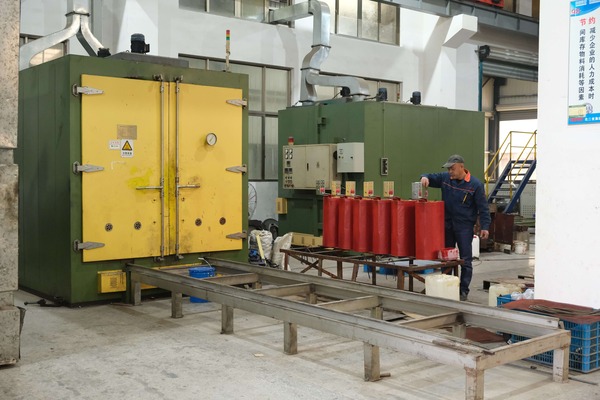
In my years of experience with transformer maintenance, I’ve seen firsthand how proper drying can breathe new life into a transformer. Let’s explore why it’s so important:
Effects of Moisture on Transformers
-
Reduced Insulation Resistance:
- Moisture lowers the insulation’s ability to resist current flow
- Increases the risk of electrical breakdowns
-
Accelerated Aging:
- Moisture catalyzes chemical reactions that degrade insulation
- Can significantly shorten transformer lifespan
-
Decreased Efficiency:
- Wet insulation increases electrical losses
- Results in higher operating costs
Drying Techniques
| Method | Advantages | Considerations |
|---|---|---|
| Vacuum Drying | Highly effective, faster | Requires specialized equipment |
| Hot Oil Circulation | Can be done on-site | Time-consuming, risk of oil contamination |
| Low Frequency Heating | Uniform drying, less stress on insulation | Requires specific LF power source |
Best Practices for Efficient Drying
Based on my experience, here are some key practices for effective transformer drying:
-
Moisture Assessment:
- Perform oil and insulation moisture tests before drying
- Helps determine the extent of drying required
-
Temperature Control:
- Maintain optimal temperature throughout the process
- Too high temperatures can damage insulation
-
Vacuum Application:
- Use vacuum to enhance moisture removal
- Ensures thorough drying of hard-to-reach areas
-
Continuous Monitoring:
- Track moisture levels throughout the drying process
- Ensures drying is complete before recommissioning
-
Post-Drying Tests:
- Conduct insulation resistance and other tests after drying
- Confirms the effectiveness of the drying process
I once dealt with a transformer that had been out of service for years in a humid environment. The insulation was saturated with moisture, and the owner was considering scrapping it. We implemented a comprehensive drying process using a combination of vacuum and low-frequency heating. After several days of careful drying and monitoring, we were able to restore the transformer to a serviceable condition, saving the company a significant amount in replacement costs.
Remember, efficient drying is not just about removing visible moisture. It’s about extracting moisture from deep within the insulation structure. A well-executed drying process can significantly extend the life of a transformer and prevent costly failures down the line.
Transformer Oil Quality Monitoring and Fault Analysis: How to Stay Ahead of Problems?
Ever felt like you’re always reacting to transformer issues instead of preventing them? The key to staying ahead lies in effective oil quality monitoring and fault analysis.
Regular transformer oil quality monitoring and fault analysis are essential for early detection of potential issues. By analyzing oil properties and dissolved gases, you can identify developing faults before they lead to catastrophic failures.

Throughout my career, I’ve seen how proactive oil monitoring can save companies millions in prevented downtime. Here’s what you need to know:
Key Oil Quality Parameters
-
Dielectric Strength:
- Indicates oil’s ability to withstand electrical stress
- Low values suggest contamination or moisture ingress
-
Acidity:
- Measures oil degradation
- High acidity can lead to insulation breakdown
-
Moisture Content:
- Critical for maintaining insulation integrity
- High moisture content accelerates aging
Dissolved Gas Analysis (DGA)
| Gas | Potential Indication |
|---|---|
| Hydrogen (H2) | Partial discharge, arcing |
| Methane (CH4) | Low energy electrical fault |
| Acetylene (C2H2) | High energy arcing |
| Ethylene (C2H4) | Thermal fault |
Effective Monitoring Strategies
Based on my experience, here are some strategies for effective oil quality monitoring:
-
Regular Sampling:
- Establish a consistent sampling schedule
- Frequency depends on transformer criticality and operating conditions
-
Trend Analysis:
- Track oil parameters over time
- Look for gradual changes that might indicate developing issues
-
Online Monitoring:
- Install real-time monitoring systems for critical transformers
- Allows for immediate detection of sudden changes
-
Comprehensive Testing:
- Perform both routine tests and detailed analysis
- Include physical, chemical, and electrical property tests
-
Fault Gas Ratios:
- Use established methods like Duval Triangle or Rogers Ratio
- Helps in diagnosing specific types of faults
I once worked with a utility company that implemented a comprehensive oil monitoring program. Within the first year, they detected a developing partial discharge in a critical substation transformer. By catching it early, they were able to schedule a controlled outage for repairs, avoiding a potential unplanned outage that could have affected thousands of customers.
Remember, oil quality monitoring is not just about collecting data – it’s about interpreting that data effectively. A well-designed monitoring program, combined with expert analysis, can provide invaluable insights into your transformer’s health and help you make informed maintenance decisions.
Impact of Prolonged Short Circuit on Transformer and Repair Strategies: What’s at Stake?
Have you ever wondered what happens to a transformer during a prolonged short circuit? The consequences can be severe, but with the right strategies, recovery is possible.
Prolonged short circuits can cause severe damage to transformers, including winding deformation, insulation breakdown, and core damage. Effective repair strategies involve thorough assessment, careful disassembly, and meticulous reconstruction to restore the transformer’s functionality and reliability.
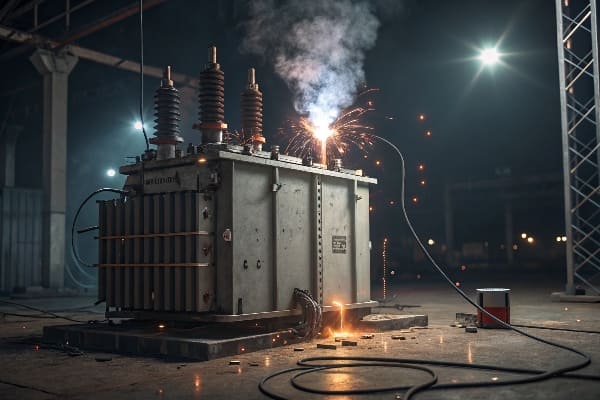
In my years of dealing with transformer failures, I’ve seen the devastating effects of prolonged short circuits. Let’s dive into the impacts and repair strategies:
Effects of Prolonged Short Circuit
-
Mechanical Damage:
- Winding deformation due to extreme electromagnetic forces
- Loosening of clamping structures
-
Thermal Damage:
- Insulation breakdown from excessive heat
- Oil degradation and potential carbonization
-
Electrical Stress:
- Voltage spikes leading to turn-to-turn insulation failure
- Potential core saturation and damage
Repair Strategies
| Stage | Actions |
|---|---|
| Assessment | Visual inspection, electrical tests, oil analysis |
| Disassembly | Careful removal of affected components |
| Repair/Replace | Rewinding, insulation replacement, core treatment |
| Reassembly | Precise reconstruction, ensuring proper alignment |
| Testing | Comprehensive electrical and mechanical tests |
Key Considerations in Repair Process
Based on my experience, here are crucial points to consider during transformer repair:
-
Root Cause Analysis:
- Identify the cause of the short circuit
- Implement measures to prevent recurrence
-
Extent of Damage Evaluation:
- Use advanced diagnostic tools like frequency response analysis
- Determine if repair is economically viable compared to replacement
-
Quality of Repair Materials:
- Use high-quality insulation and conductor materials
- Ensure compatibility with existing components
-
Skilled Technicians:
- Employ experienced personnel for complex repairs
- Proper training in latest repair techniques
-
Documentation and Traceability:
- Maintain detailed records of all repair procedures
- Ensure traceability of all replaced parts
I once dealt with a transformer that had suffered a prolonged short circuit due to a lightning strike. The initial assessment showed severe winding deformation. We decided to completely rewind the transformer, using the opportunity to upgrade the insulation system. The repaired transformer not only regained its original performance but also showed improved resilience to future stresses.
Remember, while repairing a transformer after a prolonged short circuit is possible, prevention is always better than cure. Regular maintenance, proper protection systems, and quick fault clearance mechanisms are your best defenses against severe short circuit damage.
Safety Considerations During Transformer Maintenance: How to Protect Your Team?
Have you ever stopped to think about the risks involved in transformer maintenance? Safety should always be your top priority when working with these high-voltage giants.
Transformer maintenance involves significant safety risks including electrical shock, arc flash, and exposure to hazardous materials. Proper safety protocols, personal protective equipment (PPE), and thorough risk assessments are essential to protect maintenance teams.

Throughout my career, I’ve emphasized the importance of safety in transformer maintenance. Here’s what you need to know to keep your team safe:
Key Safety Risks
-
Electrical Hazards:
- High voltage shock risk
- Arc flash potential
-
Chemical Hazards:
- Exposure to transformer oil
- Potential PCB contamination in older units
-
Physical Hazards:
- Heavy lifting and moving parts
- Working at heights
Essential Safety Measures
| Measure | Purpose |
|---|---|
| Lockout/Tagout | Ensure equipment is de-energized |
| PPE | Protect against electrical and chemical hazards |
| Proper Grounding | Prevent electrical shock |
| Ventilation | Reduce exposure to oil vapors |
Best Practices for Safe Maintenance
Based on my experience, here are crucial safety practices to implement:
-
Comprehensive Risk Assessment:
- Conduct thorough job safety analysis before each maintenance task
- Identify potential hazards and mitigation strategies
-
Proper Training:
- Ensure all personnel are trained in electrical safety
- Provide specific training on transformer maintenance procedures
-
Use of Appropriate PPE:
- Provide and enforce the use of proper protective equipment
- Regularly inspect and replace PPE as needed
-
Clear Communication:
- Establish clear communication protocols during maintenance
- Use a buddy system for high-risk tasks
-
Emergency Preparedness:
- Have emergency response plans in place
- Conduct regular drills and training on emergency procedures
I once witnessed a near-miss incident where a technician almost contacted a live bushing during what was supposed to be a routine inspection. This experience led us to implement a strict double-check system for our lockout/tagout procedures, significantly enhancing our safety protocols.
Remember, safety in transformer maintenance is not just about following rules – it’s about creating a culture where every team member is committed to their own safety and the safety of their colleagues. Regular safety meetings, open communication about near-misses, and continuous improvement of safety procedures are key to maintaining a safe work environment.
Conclusion
Proper attention to insulation, moisture control, core grounding, winding materials, drying techniques, oil quality, and safety is crucial in managing transformer short circuit faults. Regular maintenance and adherence to best practices ensure transformer reliability and longevity.
**
Free CHBEB Transformer Catalog Download
Get the full range of CHBEB transformers in one catalog.
Includes oil-immersed, dry-type, pad-mounted, and custom solutions.
Quick Message
Request A free quote
We'd like to work with you
- +86 15558785111
- [email protected]
- +86 15558785111
What We Do
CHINA BEI ER BIAN (CHBEB) GROUP, with 218 million in registered capital, originated from Beijing Beierbian Transformer Group. Headquartered in Beijing for R&D, it operates major production bases in Nanjing and Yueqing, producing high-quality products.
Latest Product
address
BeiJing
No 3,RongJing East Road,BeiJing Economic Technological Development Area,BeiJing,China
JiangSu
No 7️Xiangfeng Road,Jiangning,NanJing,JiangSu,China
WenZhou
No.211, Wei 16 Road, Industrial Zone, Yueqing, Wenzhou, Zhejiang, China.
XiangYang Industrial Zone ,YueQing,WenZhou,ZheJiang,China
contact us
- [email protected]
- +86 13057780111
- +86 13057780111
- +86 15558785111
Copyright © Bei Er Bian Group


